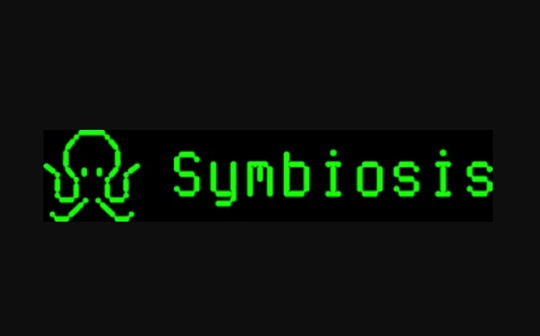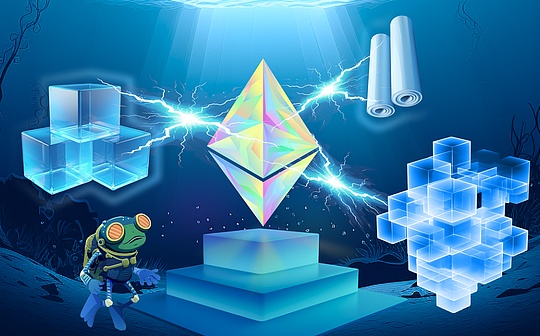AltLayer Research Report: Rollup as a Service and its Potential

Reprinted from jinse
01/02/2025·3MAuthor: Dewhales Research Source: substack Translation: Shan Ouba, Golden Finance
AltLayer has come a long way from aggregating boxed zk solutions to launching proprietary re-pledge-based technology to scale and accelerate web3 progress. Let’s dive into this topic with a real-world example!
Table of contents
-
introduction
-
Rollup Center
-
Re-staking Rollups
-
Relevant participants
-
4.1 Partners and projects using AltLayer technology
-
4.2 Integration example
-
Tokenomics
-
Who is behind AltLayer?
-
supporter
-
in conclusion
1. Introduction
In the ever-evolving blockchain space, scalability and customization have become major concerns for application developers. With the popularity of ZK Rollups and Optimistic Rollups, there is a clear need for solutions that allow developers to scale their applications while maintaining flexibility and control.
ZK Rollups and Optimistic Rollups have made significant progress in the blockchain field in recent years, as they can significantly improve the throughput and efficiency of existing blockchains such as Ethereum. However, despite their promise, these rollup technologies also bring their own set of challenges, especially in terms of accessibility, customization, centralization of orderers, soft finality, liquidity fragmentation, etc.
This is where AltLayer comes in. Unlike existing options currently available to app builders, AltLayer offers Rollups-as-a-Service for developers seeking hands-on control of their rollup solutions. RaaS services allow developers to directly manage their rollups, providing a high degree of customization and control over their blockchain infrastructure.
However, what really sets AltLayer apart is its new re-staking Rollup framework, which introduces re-staking into rollups. RaaS combined with Re- Staking's Rollup framework enables anyone, including individuals with little to no coding experience, to create their own custom blockchain execution layer in minutes and bring additional security and decentralization to their rollups. Centralization. This remarkable feature bridges the gap between technical and non-technical users, making AltLayer an option for a wide range of application builders.
In this article, we'll delve into the mechanics and potential of AltLayer and explore how it can become a Rollups-as-a-Service solution in the rapidly evolving blockchain space.
2. Rollup Center
AltLayer is a Rollup-as-a-Service protocol that allows developers to launch their own Layer 2 (imagine launching a version of Optimism, zkSync, Arbitrum, etc. specifically for applications). AltLayer provides:
-
SDK for developers who want to manage rollups themselves
-
No-code dashboard that allows anyone to generate a custom execution layer in minutes with a few simple clicks
Basically, AltLayer is a decentralized rollup center that allows individuals to launch their own L2 solutions based on their needs. However, questions may arise regarding the types of execution methods available, rollup speed, general/special purpose rollups, etc.
AltLayer allows launching ZK Rollups and Optimistic Rollups, with EVM, WASM or other runtimes, for general purpose or application specific purposes. Users can completely customize their rollup according to their needs and preferences.
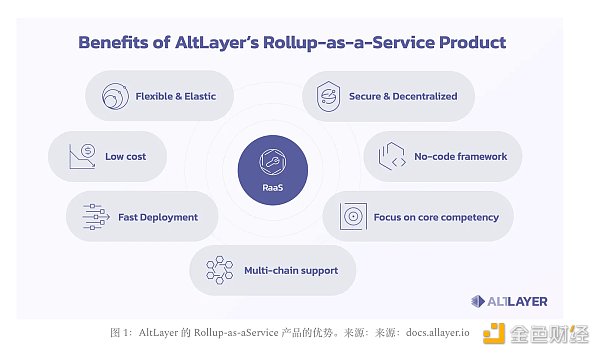
As mentioned above, AltLayer allows for rapid deployment in minutes, and the process is similar to deploying on a regular chain. AltLayer's rollups do not need to be secured by hundreds of validators (such as the Cosmos SDK) because they use the underlying chain (Layer 1) as the security layer.
AltLayer has a modular design at its core, allowing end users to customize their rollup solutions according to their preferences. This flexibility extends to the choice of runtime environment, including options such as EVM, WASM, and more. Additionally, users are free to choose their preferred data availability layer, whether it is an L1 blockchain or a data layer like Celestia. AltLayer also allows users to choose their preferred settlement layer, such as Ethereum or Arbitrum One.
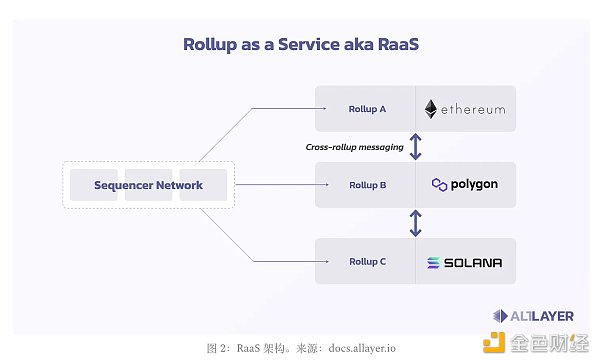
The main problem faced by most rollups is sequencer decentralization (ordering and processing of transactions). However, AltLayer is operated by a decentralized network of sequencers. These orderers are selected from a network of orderers called SQUAD based on their staking and some randomness. We will discuss SQUAD in detail in the next section.
Finally, a core feature worth mentioning is hierarchical finality. Traditional blockchains typically classify blocks as finalized or not finalized. However, AltLayer takes a more nuanced approach to block finalization, implementing a layered system. This layered system enables end users to determine the final status of transactions based on their chosen security budget. As the block passes through these different layers of finalization, the confidence in finalization gradually increases. At the execution level, the final confirmation has the lowest confidence, reaching its peak at the rollup level.
AltLayer's final validation process consists of three different levels: execution level (suitable for low security budgets), verification level (suitable for medium security budgets), and rollup level (suitable for high security budgets).
-
Execution level finalization : Transaction pool contents are collected by block producers and organized into blocks. These blocks are then submitted to the consensus protocol. Once these blocks and the transactions they contain are verified and accepted by the consensus protocol, they receive final confirmation at the execution level.
-
Validation level finalization : Validation level finalization is achieved once a block generated and verified by the block producer and consensus protocol has been verified by the validators. Further, stronger final confirmation occurs when more validators are able to confirm or reject the update, and more confirmations increase the likelihood of correctness.
-
Rollup level finalization: Blocks cleared by quorum consensus will go through a challenge phase, and anyone can run their validators and participate in verification. Challengers can raise challenges if discrepancies are discovered in on-chain proposals. A successful challenge will invalidate subsequent blocks and trigger a state rollback. Unsuccessful challenges will result in the challenger's stake being slashed.
AltLayer also provides another type of rollup called Flash Layers, which are better suited to solving scalability issues. Flash Layers are one-time, application-customized rollups with optional fraud proof.
With Flash Layers, dApp developers can:
-
Quickly launch a fast and scalable rollup guaranteed by Layer 1
-
Use rollup within the required time to prevent Layer 1 from clogging
-
Handle rollup by doing "final settlement" on Layer 1
This significantly optimizes resource utilization, as the execution layer and its resources are only called upon when the dApp experiences high traffic that exceeds Layer 1 limits. When demand decreases, dApps can seamlessly return to Layer 1 operations.
Potential use cases include NFT minting events, games, event ticketing, and more.
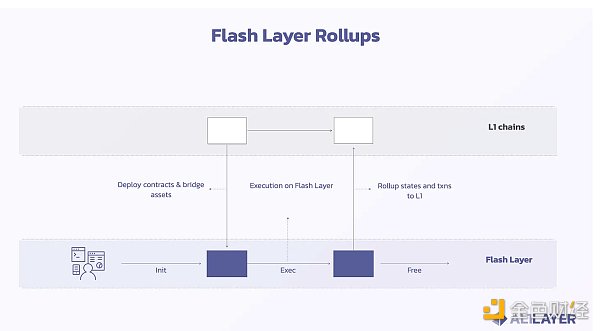
3. Re-staking Rollups
This is a new concept developed in collaboration with EigenLayer. It consists of a set of vertically integrated Active Validation Services (AVS) created on demand for a given rollup bundle. Together, these AVS provide three key services for rollup applications: decentralized ordering, state correctness verification, and faster finality. This facilitates rollup decentralization, enhanced security, and interoperability between rollups, while leveraging Ethereum’s trusted network through re-staking. The updated rollup bundle consists of three modular components called:
-
VITAL (AVS for decentralized rollup state verification)
-
MACH (AVS for fast finality)
-
SQUAD (AVS for decentralized sorting)
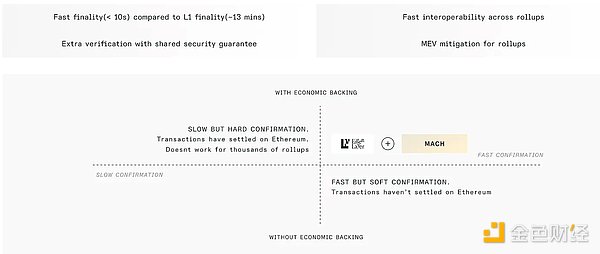
Let 's take a closer look at these components:
VITAL acts as an integrated verification layer for rollup bundles. It consists of a network of AVS-registered operators who validate all new status proposed by the SQUAD operator. The VITAL operator detects invalid state roots and can challenge the SQUAD operator using the bisection protocol. Basically, VITAL is a network of operators that validate new states. Unlike the initial confirmation provided by rollup sequencers, the confirmation provided by VITAL is much stronger because of the financial incentives behind it. This allows the assets to be withdrawn immediately. VITAL can also be used with optimistic and ZK proofs, where the VITAL operator can ask the SQUAD operator to generate a ZK proof for a disputed state root.
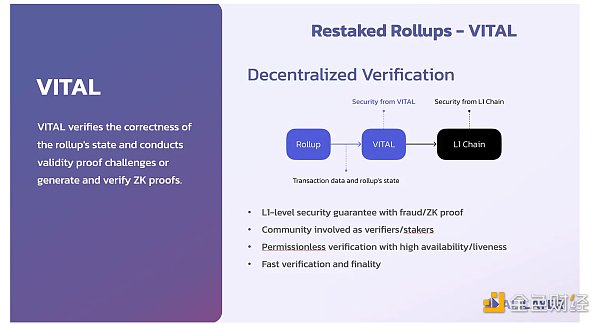
MACH aims to solve the slow finality problem of rollups by validating rollup blocks and ensuring that the blocks are valid according to the rollup's state transition function. Once an invalid block is detected, the MACH operator will issue an alert. If enough operators agree with the alert, it can be upgraded to upstream dApps. The MACH service will be provided to end users as an RPC endpoint, reporting whether a specific rollup block is considered final. This RPC endpoint can be integrated into any converged decentralized application, providing faster and more reliable confirmations. MACH will also help exchanges, bridges, light clients and other ancillary services that require streaming access to rollup state and blocks to provide their products and services.
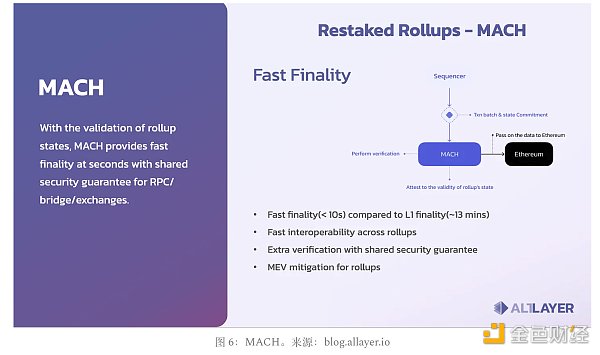
SQUAD enables nodes operated by EigenLayer AVS operators to register their interest as rollup orderers. Once the required number of orderers have staked the minimum collateral, these orderers can begin ordering transactions for the rollup. To facilitate orderer discovery, SQUAD is designed as a network of nodes that any EigenLayer AVS operator can join, effectively acting as a complete blockchain with WASM and EVM execution environments. Nodes in SQUAD are called validators, which is typical in any PoS network.
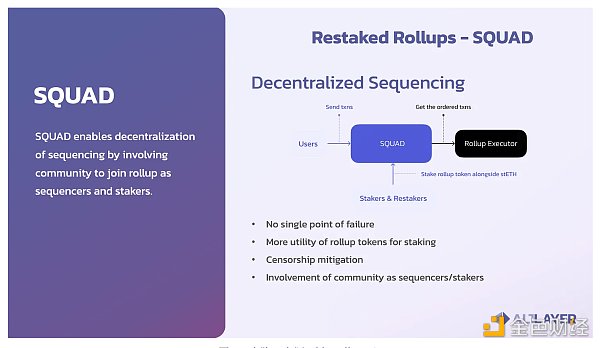
4. Relevant participants
4.1 Partners and projects using AltLayer technology
AltLayer has many partners, most of which are integration in nature, involving the use of AltLayer's technology stack or integrating the technology stacks of other projects into AltLayer. This is a strong indication to provide a Rollup- as-a-Service product. As of September 2023, AltLayer has multiple partners and integrations: EigenLayer, Sovereign SDK, HyperLane, Celestia, Orbiter Finance, Espresso Systems, Radius, Double Jump.Tokyo, Arbitrum Orbit, and other projects related to AltLayer include: Another World, My Square, Connext, MatchBox, Oveit, BendDAO, Skyark, Port3, Degame, Uforica, Evolv, Chirpley, StratisX, RNS.ID, 3UP, Evolv, Fobo.club, Automata, MySquare NFT, TaskOn and DF Archon. As of the end of May 2024, AltLayer has a large number of partners and integrations, with weekly blog announcements and an ecosystem section of 120 projects across various categories.
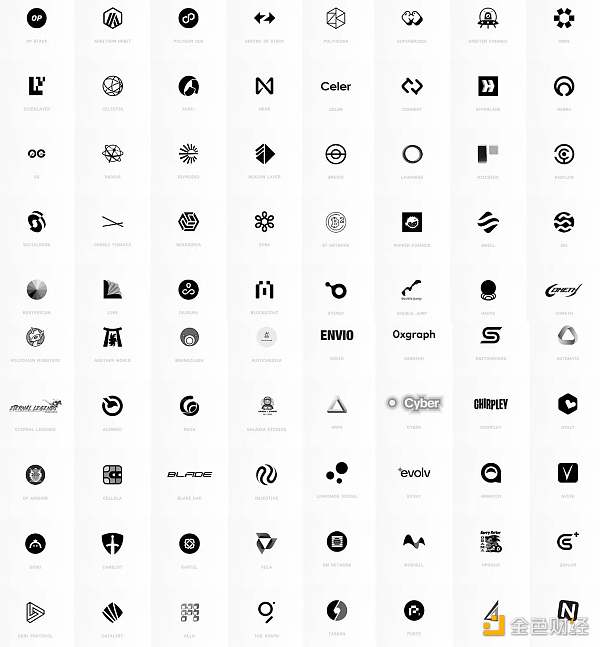
4.2 Integration example
EigenLayer is an Ethereum re-staking protocol. AltLayer and EigenLayer collaborated to come up with the concept of re-pledge rollups, as mentioned earlier. AltLayer’s re-staking rollups currently running on the EigenLayer mainnet include:

-
Polyhedra : ZkBridge from Polyhedra Network has made significant progress in the blockchain industry, providing a robust, efficient and secure cross-network interaction protocol suitable for a variety of Layer 1 and Layer 2 networks. Through zkBridge integration, AltLayer's rollups now ensure seamless compatibility with more than 30 different Layer 1 and Layer 2 networks. As part of the collaboration, AltLayer plans to join Polyhedra AVS via restaking to support Bitcoin zkBridge.
-
Injective : MACH integrated with AltLayer for inEVM enables the deployment and integration of smart contracts compiled into EVM bytecode in the Injective ecosystem, while ensuring composability through WASM/EVM. AltLayer's MACH will provide re-pledge-based security in inEVM, benefiting applications running on inEVM.
-
Brevis is a zero-knowledge coprocessor that allows smart contracts to read and utilize the complete historical data of any chain and perform custom calculations in a trustless manner. Using Brevis, developers can create a variety of data-driven functions. AltLayer's re-pledge rollups will be enhanced with the Brevis coprocessor. By providing the Brevis coprocessor, developers on AltLayer can reliably perform on-chain historical data calculations and build data-driven decentralized applications that respond to dynamic data input.
-
Sovereign SDK is an interoperable and extensible ecosystem of rollup packages that can run on any blockchain. Their SDK is an open source toolkit for creating zk and optimistic rollup packages. Sovereign SDK is used by protocols such as Haun, 1kx, EigenLayer and Celestia. In AltLayer, Sovereign is integrated to facilitate rollup package deployment within the Rollups-as-a-Service (RaaS) ecosystem.
-
HyperLane simplifies the deployment of feature compatibility in its blockchain. Through permissionless interaction capabilities, users can deploy HyperLane anytime and anywhere. As a result, blockchain creators and developers can enjoy greater autonomy and quickly make their products available across chains. AltLayer has partnered with Hyperlane to provide license-free compatibility within the AltLayer ecosystem. In addition to the built-in merge bridge, projects using the AltLayer technology stack can leverage Hyperlane for deployment and communication across merge services.
-
Celestia is a modular blockchain used by AltLayer for Data Availability (DA) to solve the challenges of data availability and reliable state verification. AltLayer is configured to support Celestia's DA layer as one of the rollup package options created through AltLayer merged dashboards, thereby reducing the cost of data availability. As part of the integration, AltLayer developers will extract chain data from Celestia, compress and upload it to the Celestia network. This will allow the state of the rollup to be completely reconstructed using Celestia data.
-
Nebra : AltLayer has partnered with Nebra to integrate its advanced Universal Proof Aggregation (UPA) technology into its rollup solution. Nebra's UPA is the first production-ready universal proof aggregation protocol designed to achieve over 10x reduction in gas cost and composability of zero-knowledge proof verification.
-
Orbiter Finance acts as a bridge between Ethereum and L2 rollups. Orbiter partners with AltLayer to address L2’s liquidity fragmentation issue through functional compatibility tools.
-
Espresso Systems integrates into the AltLayer technology stack, adding Espresso Sequencer, a decentralized sequencer solution. Developers can choose whether to use AltLayer's decentralized verification solution and/or Espresso Sequencer when deploying their rollup packages within the AltLayer technology stack. This partnership provides application developers with an easy way to launch a scalable and customizable L2 layer, while ensuring that future users of the merged package benefit from the properties provided by the decentralized orderer.
-
Radius redefines decentralization in rollup packages by preventing MEV, censorship resistance, and financial stability. Together with encryption-based sorting, this protects users from censorship and MEV risks. With the integration of Radius and AltLayer, developers will discover the dual advantages of the user-friendly and efficient AltLayer platform for creating rollup packages, as well as the encryption-based sorting provided by Radius.
-
Double jump.tokyo : A leading Japanese blockchain gaming and NFT startup, collaborates to integrate AltLayer’s comprehensive technology stack into Oasys, an optimized game developed by a group of developers including Double jump.tokyo Blockchain. It's worth noting that AltLayer generally embraces web3 gaming narratives and caters to customers in that space. AltLayer provides game developers with two types of rollup packages: temporary and persistent. Temporary rollup packages are ideal for event-driven applications that experience rapid surges in demand over a short period of time, such as mini-games or turn-based games. On the other hand, persistent rollup packages are best suited for games with a long life cycle. It is worth noting that AltLayer's rollup package (flash layer) was previously used to host popular fully networked games such as Dark Forest, which attracted hundreds of thousands of transactions every day. AltLayer positions Flash Layer as a solution for gaming.
-
Arbitrum Orbit is a permissionless solution recently announced by the Arbitrum Foundation that enables developers to create fully customizable Layer 3 powered by Arbitrum One. AltLayer has begun integrating support for Arbitrum Orbit and its technology stack on its no-code launch dashboard and will be ready in Q2 2023, becoming the first rollup package provider to support Arbitrum Orbit.
-
Deri Protocol is a way to trade derivatives using DeFi: hedging, speculation, arbitrage, all on the chain. Through Deri Protocol, transactions are executed according to the AMM paradigm, and positions are tagged as NFTs to facilitate integration with other DeFi projects.
-
Automata is a blockchain middleware provider supported by Binance Labs, Jump Crypto, etc. They recently launched a modular verification layer where verification occurs entirely on-chain for off-protocol calculations.
-
Cometh is a French game studio. They have worked with high-profile clients such as FDJ, Lacoste, FanLive Rugby and Life Beyond Studios to provide their Web3 needs.
5. Token Economics
The functions of AltLayer token include the following aspects:
-
Economic Security : ALT tokens will be used with rehypothecated assets to provide economic security. This guarantee can be reduced if malicious behavior is detected.
-
Governance : ALT token holders can vote on governance decisions.
-
Protocol Incentives : Operators in the AltLayer ecosystem can earn ALT tokens as rewards for their services.
-
Protocol Fees : Network participants will need to pay ALT tokens to perform services within the network.
Additionally, AltLayer provides token wrappers - reALT and stALT:
-
reALT : stands for "Re-Pledged ALT Token". It is an ERC20 interest accumulation token that records the holder's ALT pledge and accumulates rewards through compound interest. reALT tokens are issued to users who stake ALT in the main staking pool. It is a reward accumulation token that accumulates re-staking rewards.
-
stALT : This is an ERC1155 token that represents the holder’s stake in the main staking pool. stALT tokens can be manually converted to reALT through the portal.
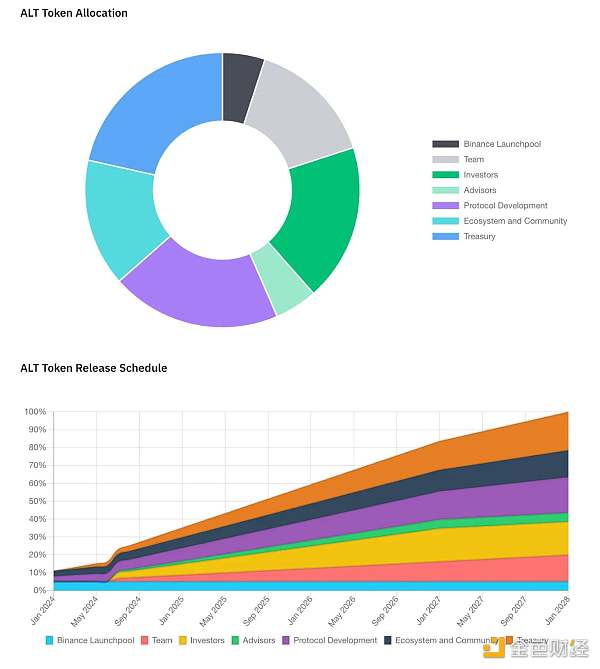
6. Who is behind AltLayer?
The AltLayer team is mainly composed of Zilliqa's core team members and developers, and their experience mostly dates back to 2017, indicating that they have a strong technical background. Additionally, team members have a solid reputation within the crypto industry.
-
Yaoqi Jia, CEO : In 2019, Yaoqi was selected into Forbes Asia's "30 Under 30". He received his PhD in Computer Science from the School of Computing, National University of Singapore, in 2017. Yaoqi led the design and creation of the first public blockchain platform with full sharding capabilities, including network, transaction and smart contract sharding. He also collaborated with Xfers to launch the StraitsX stablecoin project for Southeast Asia, and participated in blockchain projects with Mindshare, Singapore Exchange, Hg Exchange, etc. Before joining Zilliqa, Yaoqi worked at Parity Technologies.
-
Amrit Kumar, Chief Operating Officer : Amrit holds a master’s degree in information systems security, cryptography and coding. He received his PhD in Computer Science from the University of Grenoble Alpes in France and worked at the Informatics Laboratory of Grenoble (Inria). He co-founded and served as chief investment officer of Zilliqa and is currently chief operating officer of Alt Research, a research firm associated with AltLayer.
-
Tan Jun Hao, Head of Product Engineering : Former Zilliqa co-founder and core developer, Tan Jun Hao is very active in the Zilliqa community, covering technical aspects and the DeFi ecosystem and its state. He has been involved in the computer security field since 2019 and holds a bachelor's degree in computer science from the National University of Singapore, focusing on information security.
-
Antonio Nunez, Head of Platform Development : Antonio holds a bachelor's degree in physics and computer engineering from Ateneo de Manila University. He has extensive development experience in various languages and tools since 2006 and is a former Zilliqa co-founder and senior engineer.
-
Dorothy Liu, Head of Growth : Dorothy holds a bachelor's degree in international business management and a master's degree in marketing. She has worked as a consultant at Deloitte and as a Vice President at OSL. With experience at well-known companies such as Synthetix and HashKey Trading, Dorothy has an excellent understanding of the interlayer mechanism of blockchain.
-
Aparna Narayanan, Head of Communications : Previously working in public affairs and strategic communications at APCO Worldwide, Aparna holds a bachelor's degree in economics, management, political science and public policy. She entered the crypto space in 2019 and rose from a community manager to the head of communications at Zilliqa.
7. Supporters
AltLayer is primarily backed by Tier 1 category backers and individuals with good reputations within the crypto industry: Polychain Capital, Breyer Capital, Jump, Binance Labs Fund, Hashkey Capital, Bankless Ventures, IOSG Ventures, Primitive Ventures, TRGC, Mask, OKX Ventures, DAO 5, and notable figures such as Circle co-founder Sean Nevile, Gavin Wood, a16z general partner Balaji Srinivasan, Synthetix’s Kain Warwick, Messari’s Ryan Selkis, Synthetix’s Jordan Momtazi, and Bodhi Ventures.

8. Conclusion
In the last cycle of the crypto industry, projects aimed to increase fragmentation and strive to dominate the market in the battle for liquidity and users. However, now more and more people realize the importance of cooperation. Each project has its pros and cons and focuses on specific user categories and developers. In recent years, there have been clear trends towards convergence – dApps, different strategies, liquidity and modular blockchains.
AltLayer is a project in line with the current times, aiming to provide developers with maximum convenience without spending a lot of resources, not only to launch their own network, but even to implement it from the SDK. Additionally, AltLayer offers its own hands-on technology solution for launching rollups and offers the ability to use other technologies, including modular technology, positioning its product as Rollup-as-a-Service.
Additionally, AltLayer successfully integrates with new technologies and incorporates them into its technology stack. This is reflected in the integration with EigenLayer - AltLayer quickly provided an AVS-based solution and seamlessly integrated its rollups product into it.

